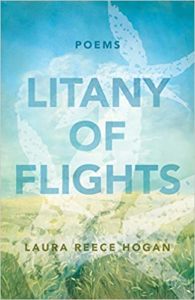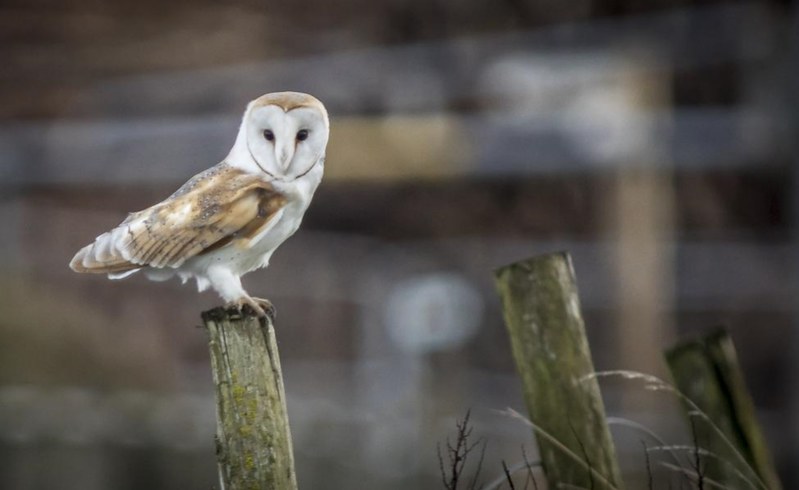The best way to describe a poem by Laura Reece Hogan in her new collection, Litany of Flights, is, first, to let the poem speak for itself and, second, to read it three times. The only introduction is that the collection uses birds as an organizational theme.
On Adoring You
I
a cocoon of yourself. Splinters for silk,
thorns your thread, a love poured, an emptied
truth. I drink. In stripped unknowing. I long
to emerge winged, a bloom from black earth,
for love is stronger than death.
At sunrise you plait a pink-embered sky
with chattering towhees. Dew shines,
a needlework of mercy. Sugar maples
reach skyward, bud purple. You stitch
starlings, silvered chaparral, morning
glories, the faces I kiss—I feast
on the oranges of your love.
In strands mysterious I delight in you
in yet a third way. In the cellar under
silenced words, you wait, your impossible
wine in stone water jars. Golden threads
embrace, embroider, draw me,
astonished, to you.
With a first reading, you might consider this a love poem. And it is certainly that. And you note the reference to towhees, birds usually associated with North America. A second reading might reveal how deftly Hogan uses the imagery of sowing — silk for material, the thread, the plaiting, the needlework, the stitching, the embrace of golden threads, and embroidery. In a 19-line point, that level of imagery might be overwhelming, but the poet does it well, pacing it so that we not only accept it but actually look forward to it.
The third reading reveals something else. Splinters for silk and thorns for thread, the reference in the second stanza to “a needlework of mercy,” and the “third way” cited in the third stanza all point to the deeply religious nature of this poem. This is a love poem by a poet meeting and embracing her God.

Laura Reece Hogan
And that’s how all of the poems of Litany of Flights can be read — a surface level, where you focus on how well she uses her words; a metaphorical level; and a deeper level of understanding. The themes of birds and flight echoes throughout the volume, but you know she’s always reaching for something else. The poems may ostensibly be about nature, or rain, or trees, or tranquility, or the splendor of the sun, but each brings you, sometimes gently and sometimes quickly, into the religious and the spiritual.
Hogan received a B.A. degree from Rice University in Houston, a J.D. degree from the UCLA Law School, and an M.A. in theology from St. John’s Seminary in California. She is also the author of the poetry chapbook O Garden-Dweller (2017) and I Live, No Longer I: Paul’s Spirituality of Suffering, Transformation and Joy. Her poetry and writings have won a number of awards (Litany of Flights won the Paraclete Poetry Prize), and her poetry has been published in numerous literary journals.
Litany of Flights leaves us with a sense of wonder, the same sense one experiences when seeing mountains for the first (or second or third) time. You see them first on the horizon, then their outlines become more pronounced as you draw closer, and finally you feel almost overwhelmed at their presence.
Photo by Martyn Fletcher, Creative Commons, via Flickr. Post by Glynn Young.
__________________________

“I require all our incoming poetry students—in the MFA I direct—to buy and read this book.”
—Jeanetta Calhoun Mish
- Poets and Poems: Sandra Marchetti and “Diorama” - April 24, 2025
- Poets and Poems: Christina Cook and “Roaming the Labyrinth” - April 22, 2025
- Longfellow’s “Paul Revere’s Ride”: Creating a National Legend - April 17, 2025

Maureen says
Lovely.